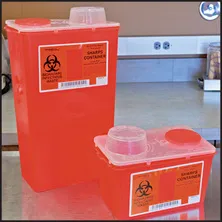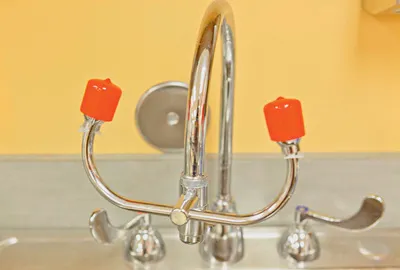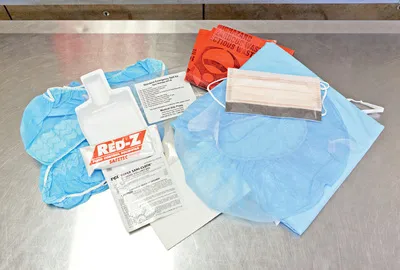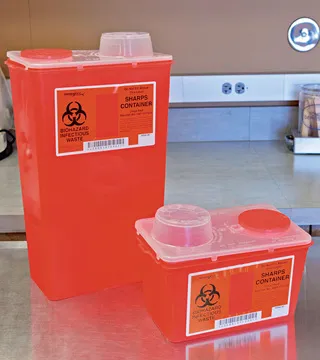
eBook - ePub
Laboratory Procedures for Veterinary Technicians E-Book
Margi Sirois
This is a test
Partager le livre
- 433 pages
- English
- ePUB (adapté aux mobiles)
- Disponible sur iOS et Android
eBook - ePub
Laboratory Procedures for Veterinary Technicians E-Book
Margi Sirois
Détails du livre
Aperçu du livre
Table des matières
Citations
À propos de ce livre
Ensure you're at your clinical best! Laboratory Procedures for Veterinary Technicians, 7th Edition covers the broad spectrum of laboratory procedures that veterinary technicians need to perform effectively in the practice setting. Comprehensive content presents the fundamentals of microbiology, hematology, urinalysis, immunology, and cytology, along with the laboratory procedures used to perform the most widely used tests such as complete blood count, urinalysis, and immunologic assays. This thoroughly updated edition includes an expanded Quality Control and Record Keeping chapter along with the latest advances in veterinary clinical procedures to prepare you for real-life laboratory work.
- Comprehensive coverage gives you a solid foundation in the fundamentals of microbiology, hematology, urinalysis, immunology, and cytology, along with the laboratory procedures used to perform related tests.
- Provides the latest information needed to successfully perform a broad spectrum of laboratory tests, including complete blood count, urinalysis, and immunologic assays.
- Step-by-step procedure boxes offer quick access to the skills you must perform during your educational program, as well as procedures that are commonly performed by vet techs in private practice.
- A comprehensive glossary of terms at the end of the text offers accurate, concise definitions.
- Vet Tech Threads provide you with introductions, suggested readings, boxed technician notes, learning objectives, chapter outlines, key terms, and a glossary for easy navigation through chapters and more focused learning.
- NEW! Completely updated content throughout reflects the latest advances in veterinary clinical laboratory procedures for improved patient service and higher practice revenue.
- NEW! Thoroughly updated and expanded Quality Control and Record Keeping chapter ensures you have the most current information in this vital area.
- UPDATED! Immunology section includes the latest information in this fast-growing veterinary technology area.
Foire aux questions
Comment puis-je résilier mon abonnement ?
Il vous suffit de vous rendre dans la section compte dans paramètres et de cliquer sur « Résilier l’abonnement ». C’est aussi simple que cela ! Une fois que vous aurez résilié votre abonnement, il restera actif pour le reste de la période pour laquelle vous avez payé. Découvrez-en plus ici.
Puis-je / comment puis-je télécharger des livres ?
Pour le moment, tous nos livres en format ePub adaptés aux mobiles peuvent être téléchargés via l’application. La plupart de nos PDF sont également disponibles en téléchargement et les autres seront téléchargeables très prochainement. Découvrez-en plus ici.
Quelle est la différence entre les formules tarifaires ?
Les deux abonnements vous donnent un accès complet à la bibliothèque et à toutes les fonctionnalités de Perlego. Les seules différences sont les tarifs ainsi que la période d’abonnement : avec l’abonnement annuel, vous économiserez environ 30 % par rapport à 12 mois d’abonnement mensuel.
Qu’est-ce que Perlego ?
Nous sommes un service d’abonnement à des ouvrages universitaires en ligne, où vous pouvez accéder à toute une bibliothèque pour un prix inférieur à celui d’un seul livre par mois. Avec plus d’un million de livres sur plus de 1 000 sujets, nous avons ce qu’il vous faut ! Découvrez-en plus ici.
Prenez-vous en charge la synthèse vocale ?
Recherchez le symbole Écouter sur votre prochain livre pour voir si vous pouvez l’écouter. L’outil Écouter lit le texte à haute voix pour vous, en surlignant le passage qui est en cours de lecture. Vous pouvez le mettre sur pause, l’accélérer ou le ralentir. Découvrez-en plus ici.
Est-ce que Laboratory Procedures for Veterinary Technicians E-Book est un PDF/ePUB en ligne ?
Oui, vous pouvez accéder à Laboratory Procedures for Veterinary Technicians E-Book par Margi Sirois en format PDF et/ou ePUB ainsi qu’à d’autres livres populaires dans Medicine et Veterinary Medicine. Nous disposons de plus d’un million d’ouvrages à découvrir dans notre catalogue.
Informations
Unit 1
The Veterinary Practice Laboratory
Introduction
- Unit Outline
- Chapter 1: Safety Concerns and OSHA Standards, 2
- Chapter 2: General Laboratory Equipment, 10
- Chapter 3: The Microscope, 16
- Chapter 4: The Metric System and Lab Calculations, 23
- Chapter 5: Quality Control and Record Keeping, 27
- Unit Objectives
- Describe the role of the veterinary technician in the clinical laboratory.
- List and describe the regulations related to safety concerns in the veterinary practice laboratory.
- Describe the components of a quality control program for the veterinary practice laboratory.
- Identify, use, and maintain common laboratory equipment.
- Use the metric system to perform calculations and measurements.
Veterinarians depend on laboratory results to help establish diagnoses, to track the course of diseases, and to offer prognoses to clients. The veterinary practice laboratory can also be a significant source of income for the practice. The rapid availability of test results improves patient care and client service. Although some veterinary clinics use outside reference laboratories for test results, this may delay the implementation of appropriate treatments for patients. Most diagnostic tests can be performed in house by a well-educated veterinary technician. Veterinary practice laboratories have become increasingly sophisticated. Analytic instruments are affordable and readily available for inclusion in even the smallest veterinary clinic.
The veterinary technician/veterinarian team approach works efficiently in a laboratory situation. A veterinarian is educated in the interpretation of test results, whereas a veterinary technician is educated on generating accurate test results. The consistent generation of reliable laboratory results requires an educated veterinary technician. A veterinary technician must understand the value of quality control in the laboratory.
For additional sources for this unit see the Resources Appendix at the end of this textbook.
1
Safety Concerns and OSHA Standards
Learning Objectives
After studying this chapter, you will be able to:
- • Discuss the requirements of a chemical hygiene plan.
- • Identify mechanisms for minimizing exposure to hazards in the veterinary practice laboratory.
- • Describe general concerns related to laboratory design.
- • Identify, use, and care for personal protective equipment.
- • Discuss criteria for evaluating Internet resources.
Key Terms
Biohazard
Bloodborne pathogen
Chemical Hygiene Plan (CHP)
Engineering controls
Material Safety Data Sheet (MSDS)
Occupational Safety and Health Administration (OSHA)
Personal Protective Equipment (PPE)
Zoonoses

A comprehensive laboratory safety program is essential to ensure the safety of employees in the clinical laboratory area. The safety policy should include procedures and precautions for the use and maintenance of equipment. Safety equipment and supplies—such as eyewash stations (Fig. 1.1), fire extinguishers, spill cleanup kits (Fig. 1.2), hazardous and biohazard waste disposal containers (Fig. 1.3), and protective gloves—must be available. All employees working in the clinical laboratory must be aware of the location of these items and thoroughly trained in their use. Laboratory safety policies must be in writing and placed in an accessible location within the clinical laboratory area. Signs should be posted to notify employees that eating, drinking, applying cosmetics, and adjusting contact lenses in the laboratory are prohibited.

Fig. 1.1 Sink-Mounted Eyewash Station. This type of station is preferable to wall-mounted eyewash bottles that require regular refilling and that may not be of adequate volume to properly flush the eyes.

Fig. 1.2 Spill Cleanup Kit. These kits generally contain biohazard bags, personal protective equipment, absorbent materials, and disinfectants.

Fig. 1.3 Biohazard waste disposal containers are available in a variety of sizes. This rigid type is generally used for the disposal of sharps (e.g., scalpel blades, hypodermic needles).
In the United States, the Occupational Safety and Health Administration (OSHA) mandates specific laboratory practices that must be incorporated into the laboratory safety policy. Many other countries have similar regulations. The regulations are focused on protecting the health and safety of employees. OSHA is responsible for determining and enforcing protective standards. Some states have regulations that supersede the federal OSHA regulations. In those cases, the state regulations are at least as stringent as the federal ones. Some state and federal regulations also contain exemptions for facilities that have 10 or fewer employees. The regulations specifically include requirements for employers to do the following:
- • Comply with all relevant OSHA standards.
- • Correct any safety and health hazards in the workplace.
- • Educate employees about any potential w...